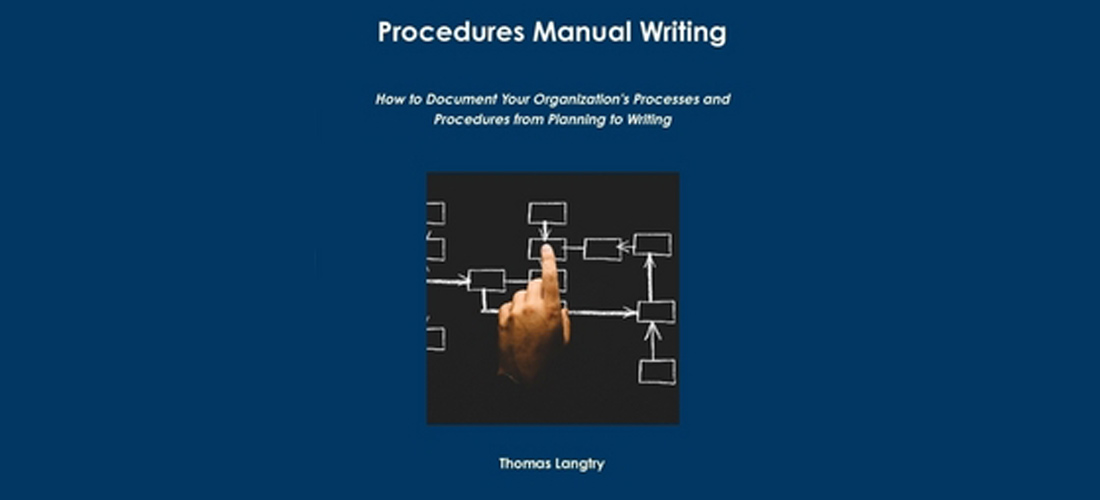
Written by Luddite Online author Thomas Langtry, Procedures Manual Writing is available at Amazon or directly from the publisher, Lulu Press. Request a copy of the companion PowerPoint presentation, free with purchase, from Education Associates, LP.
Procedures Manual Writing: How to Document your Organization's Processes and Procedures from Planning to Writing is a reference book for a course in process improvement and procedures manual writing. This manual serves primarily as a guide for documenting the step-by-step procedures your organization's staff is responsible for. Whether you are motivated by a desire to provide documentation for new hires, or to provide a definitive resource for conflict resolution or an easy reference for existing employees, this book provides lots of information about how to streamline and document your organization's procedures. If you are experiencing personnel, human resource, production, or management problems, Procedures Manual Writing can help you diagnose and resolve organizational problems.
According to Donna Ford of the U.S. Review of Books:
If you [have] ever participated in documenting the processes and tasks used by a company, then you can truly appreciate the value in Thomas Langtry’s, Procedures Manual Writing how-to book. This hands-on manual is a guide that breaks down a huge undertaking into manageable sections. Parts 1 and 2 explain the nuts and bolts of creating process flowcharts. Learn how to define the scope of a process, organize a team of Subject Matter Experts who know how tasks are handled and by whom, choose the correct flowchart Level by audience (i.e. macro level gives management an overview; micro level details a specific task), pick the flowchart Type to organize information for analysis (i.e. linear work step sequence, deployment groups arranged in "swimlanes," etc.), and build opportunity (i.e. areas for cost savings). The book includes samples that clarify flowchart levels and types.
Next, comes the transfer of flowchart information to Planner Worksheets (samples in Part 3). A team of writers use these worksheets to prepare a desk manual with step-by-step procedures. Parts 4 and 5 provide tips for inexperienced writers on avoiding common pitfalls. There are admonitions, without being too wordy, and rules that define the correct use of conjunctions and punctuation. If your team members have never created professional documentation, pay close attention to Part 6 and its instructions regarding styles, templates, and table of contents. Without utilizing these Microsoft Word features, your documentation will prove expensive and difficult to maintain.
The primary audience for Langtry’s book is the small to mid-sized corporation who needs their policies and procedures documented. The author's expertise should inspire confidence. A secondary audience is technical writers of software or hardware manuals who now seek employment in the Policies and Procedures writing job market. Finally, Langtry provides access to a PowerPoint presentation which can be used to teach a class with this book as the training manual.
RECOMMENDED by the US Review


